How housing prices change, cities that have lifted purchase restrictions
On May 9, Hangzhou and Xi’an successively announced the complete cancellation of housing purchase restrictions.
The cancellation of purchase restrictions in these two cities also means that among the 21 megacities across the country, only Shanghai, Beijing, Shenzhen, Guangzhou and Tianjin still have purchase restriction policies.
It has been almost a year since the cancellation of purchase restrictions started, and there have been two waves of climaxes.
This wave of cancellation of purchase restrictions can be traced back to the end of 2022, with Dongguan and Foshan taking the first steps to completely cancel purchase restrictions.
These two cities are already megacities, but their administrative levels are not high and they have not attracted much attention.
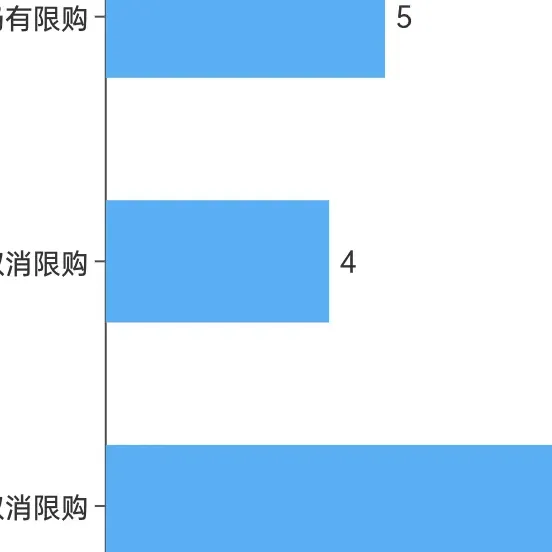
Until July 24, 2023, the meeting of the Political Bureau of the Central Committee proposed that it is necessary to adapt to the new situation of major changes in the supply and demand relationship in the real estate market, timely adjust and optimize real estate policies, and make good use of the policy toolbox according to city-specific policies.
The relevant signals released by the meeting promoted the first wave of cancellation of purchase restrictions.
In August of that year, Nanchang and Jiaxing were the first to propose a complete lifting of purchase restrictions.
In just one month, a total of 12 cities completely lifted purchase restrictions, including 7 provincial capitals, including Nanjing, Jinan, Zhengzhou, Hefei, Wuhan and other provincial capitals with large economies, as well as two non-provincial capitals, Dalian and Qingdao. Megacities, economically strong cities such as Ningbo and Wuxi.
In September, four cities including Tianjin, Xi'an, Changsha, and Chengdu introduced policies to relax purchase-restricted areas and area.
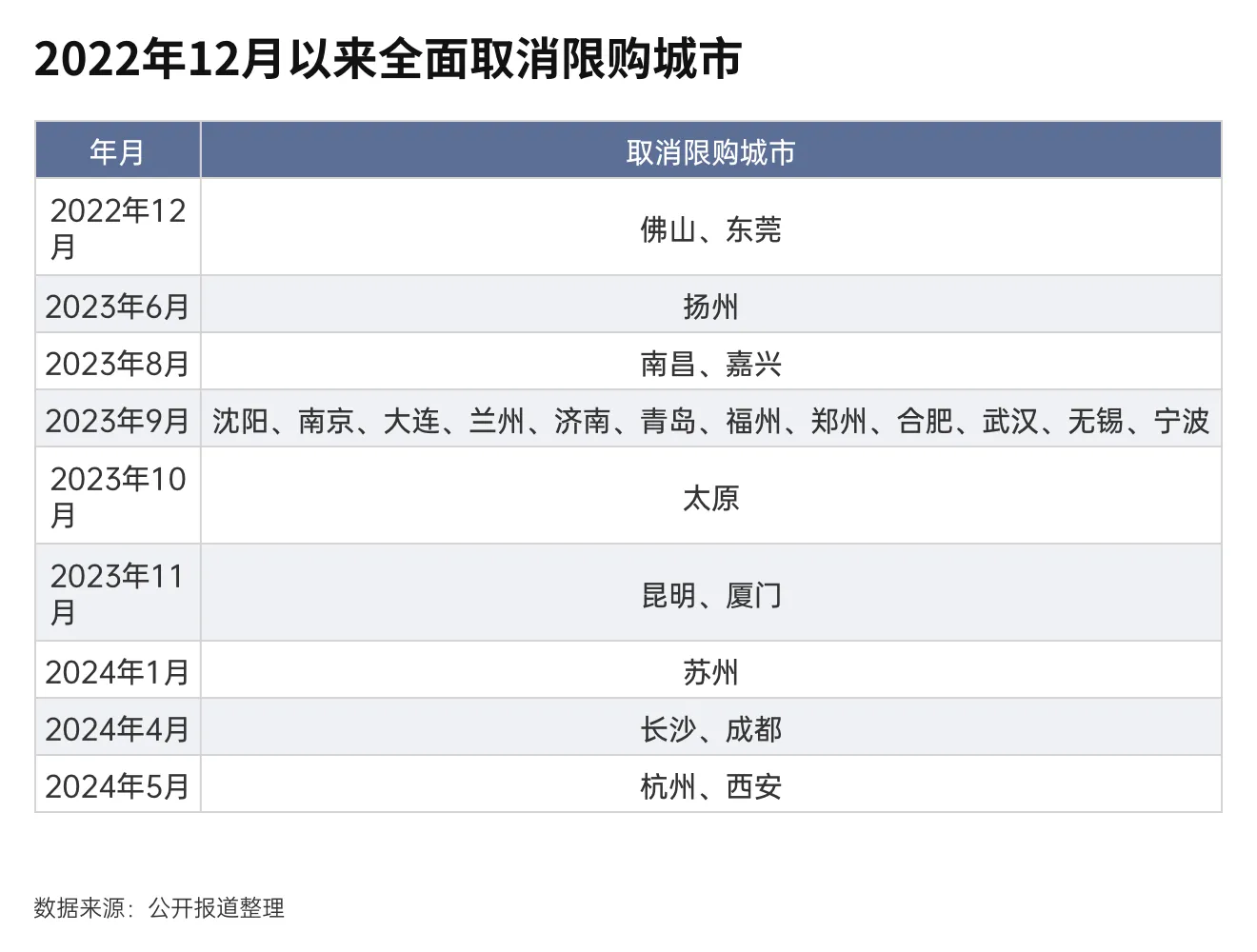
From October to the end of 2023, provincial capital cities and sub-provincial cities such as Taiyuan, Kunming, and Xiamen will follow up and completely cancel purchase restrictions.
At the same time, Changsha and Shenzhen continued to relax their purchase restriction policies, and Hangzhou and Beijing proposed relaxing their purchase restriction policies for the first time under this wave of cancellation of purchase restrictions.
This year, the second wave of canceling and relaxing purchase restrictions has begun.
On January 26, 2024, the Ministry of Housing and Urban-Rural Development emphasized at the deployment meeting of the urban real estate financing coordination mechanism that it supports cities in adjusting real estate policies according to local conditions and "fully empowers cities with autonomy in real estate regulation."
On January 30, Suzhou proposed a complete cancellation of purchase restrictions, making it almost the last non-first-tier and non-provincial capital city to propose a complete cancellation of purchase restrictions.
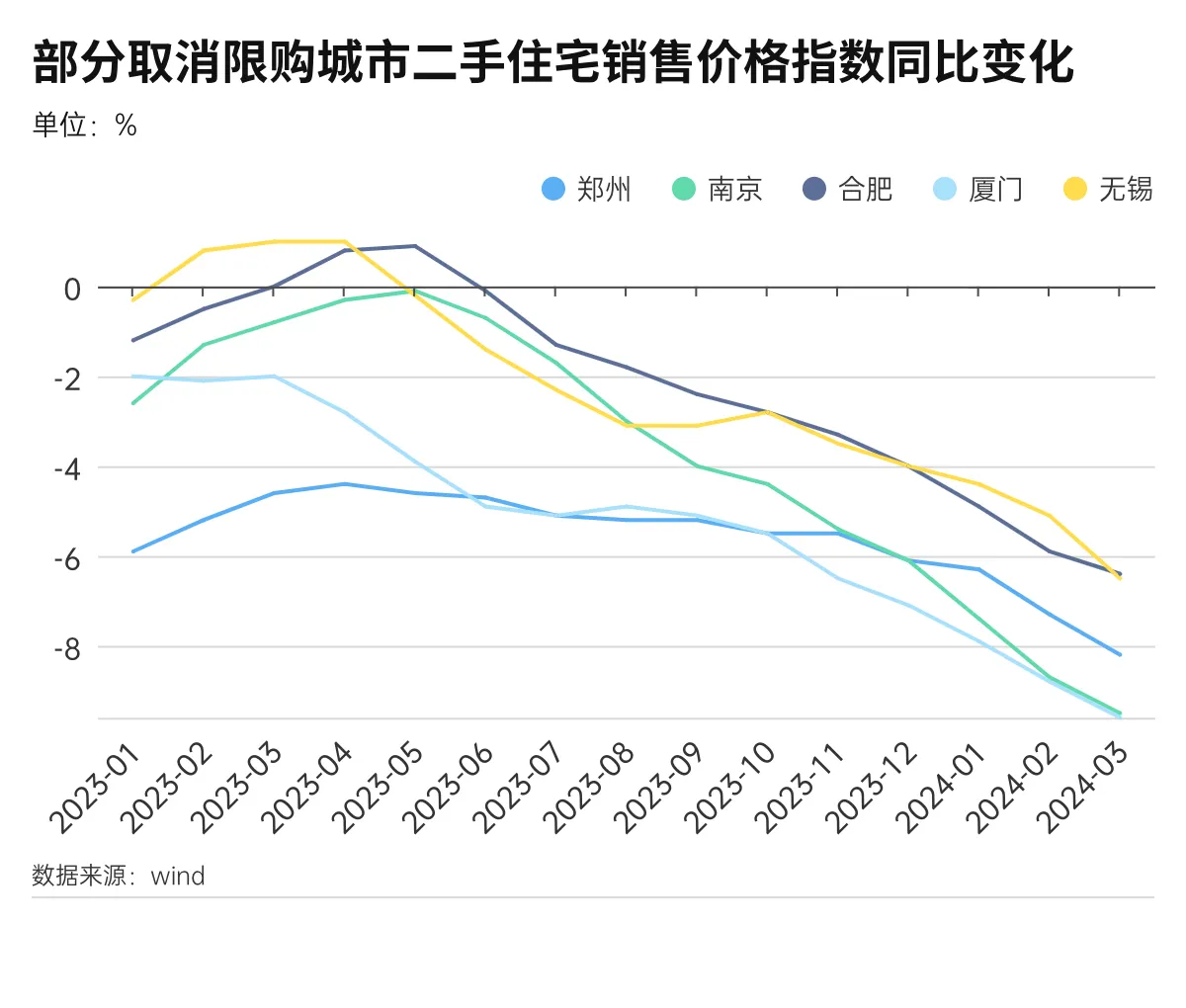
In April, Changsha and Chengdu completely lifted purchase restrictions; in May, Hangzhou and Xi'an lifted purchase restrictions.
During this period, policy information on relaxing purchase restrictions in first-tier cities was also frequently released.
On January 30, Shanghai officially introduced a policy to relax purchase restrictions, proposing that singles who are not registered in the city and have paid social security for five years can purchase houses outside the outer ring.
Since February, Beijing and Shenzhen have issued three and two relaxations of purchase restriction policies respectively, continuously releasing positive policy signals.
Although the second wave does not involve as many cities as the first wave, the cities participating in loosening restrictions and canceling purchase restrictions are gaining more and more weight.
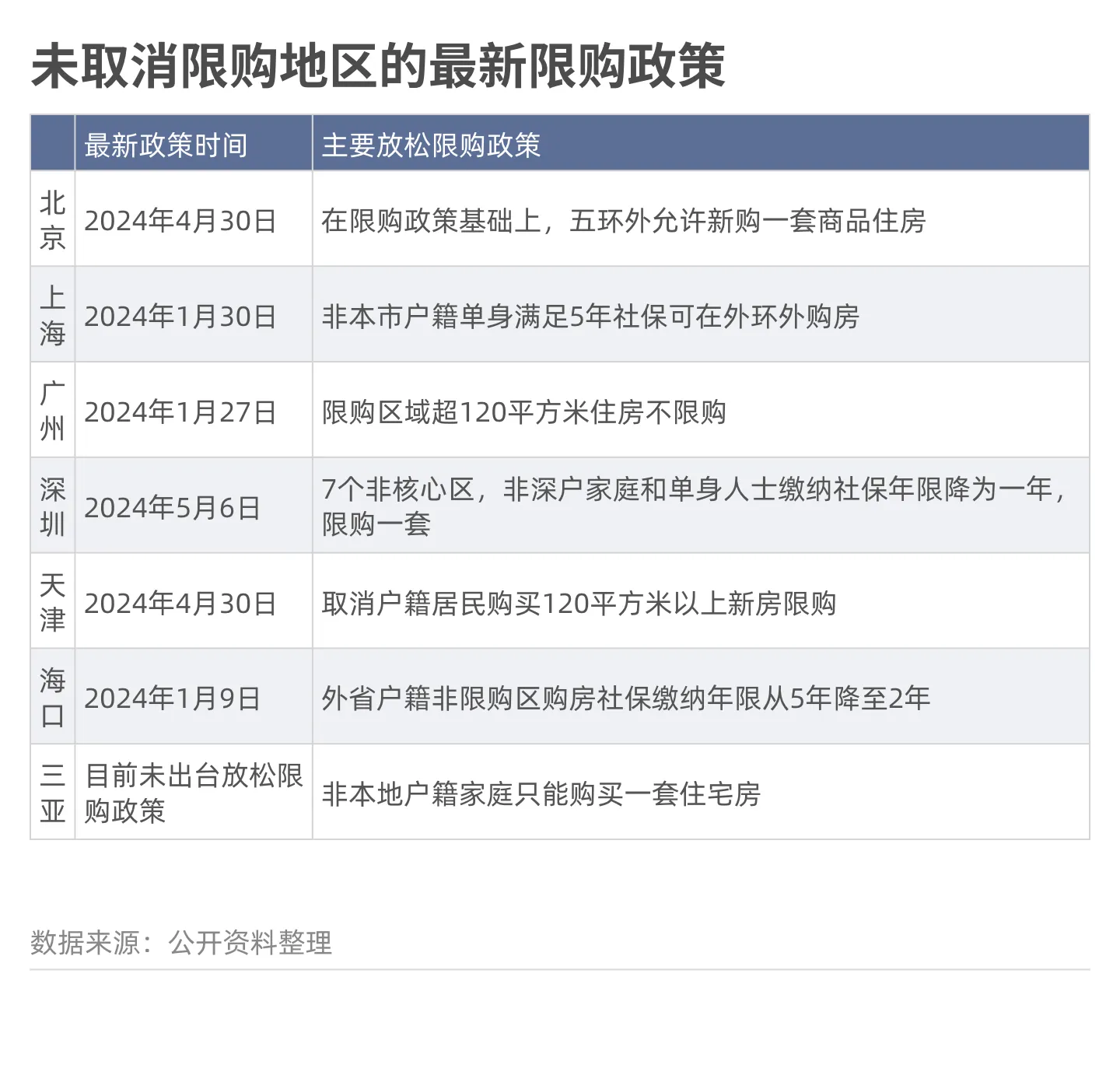
Purchase restrictions have been lifted, but housing prices in most cities have not yet recovered.
Will the property market pick up immediately if purchase restrictions are lifted?
Taking five cities including Nanjing, Zhengzhou, Hefei, Xiamen, and Wuxi as observation samples, it can be found that since the wave of cancellation and relaxation of purchase restrictions in August 2023, housing prices in these cities have not rebounded.
In the third quarter of 2023, the price of second-hand houses in Wuxi and Hefei fell by 2% to 3% year-on-year. In the first quarter of this year, the price of second-hand houses in Wuxi fell to 4.4% to 6.5%, and in Hefei it was 4.9% to 6.4%.
The year-on-year changes in second-hand housing prices in Zhengzhou, Nanjing, and Xiamen since 2023 have also been in negative growth. In March this year, the year-on-year declines in second-hand housing in Zhengzhou, Nanjing, and Xiamen reached 8.2%, 9.5%, and 9.6% respectively.

Nationwide, currently only six regions including Beijing, Shanghai, Guangzhou, Shenzhen, Tianjin and Hainan Province have not fully relaxed purchase restrictions.
These purchase-restricted areas basically maintain their original purchase-restriction policies in core urban areas, while measures to relax purchase restrictions are mainly carried out in non-core urban areas.
Beijing and Shanghai have the most stringent purchase restriction policies, followed by Shenzhen. In Hainan, only two cities, Haikou and Sanya, have stricter purchase restriction policies.
In places where purchase restrictions have not yet been lifted, what are the trends in the property market?
The average price of sample housing in Shanghai and Beijing this year is still growing positively year-on-year. Especially in Shanghai, house prices increased by 3% year-on-year in April this year, the largest increase in the past October.
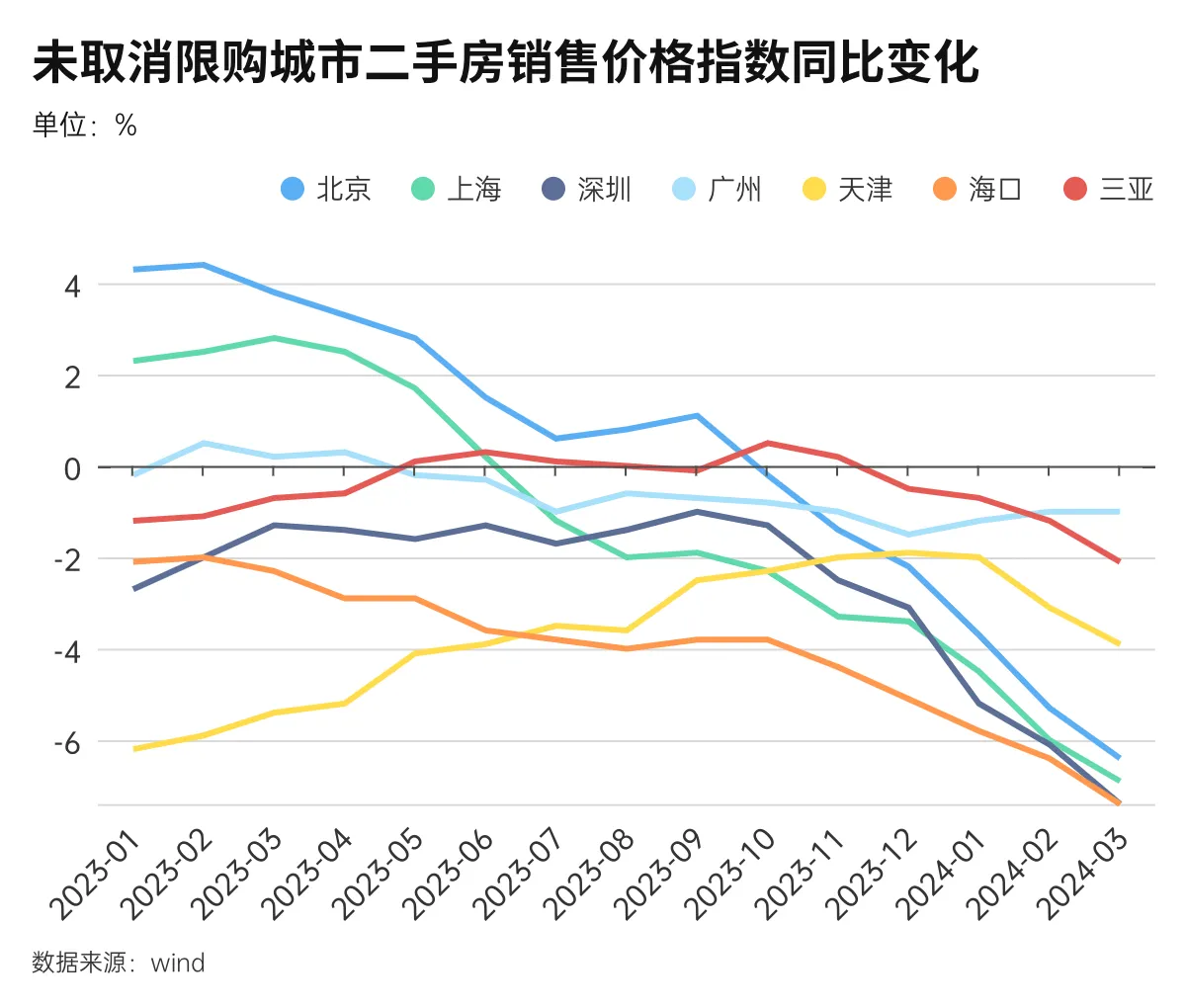
From December last year to January this year, the average price of sample residential properties in Haikou and Tianjin also achieved significant positive year-on-year growth, and the growth remained stable in the first quarter and April of this year, at around 1.3%.
Housing prices in Guangzhou and Sanya have not changed significantly. Guangzhou has maintained a slight year-on-year increase of less than 1% in most months. In Sanya, under the circumstances of strict purchase restriction policies and weakening demand, the average price of sample residential buildings has fallen slowly at about 0.3% per month. decline.
It is worth noting that the average price of sample housing in Shenzhen has been experiencing a relatively obvious negative growth in the past October, with a monthly decline of between 1% and 2%.
Since July last year, Shenzhen has also been the city that has introduced the most frequent relaxation of purchase restriction policies among first-tier cities, and the relaxation of purchase restrictions may continue to increase in the future.
However, the second-hand housing sales price index in these cities is not good.
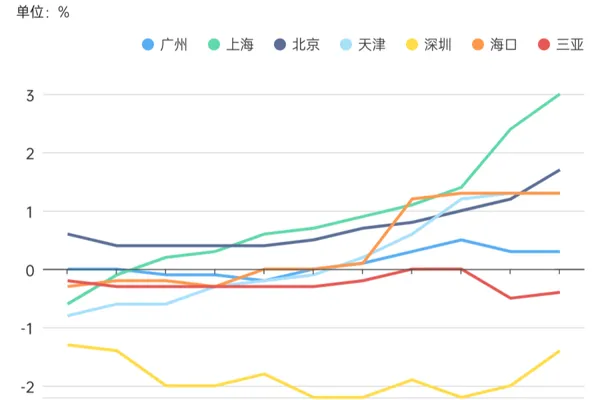
The temperature difference between the overall property market and the second-hand housing market also means that in these cities with purchase restrictions, the differentiation of the real estate market is still increasing.




